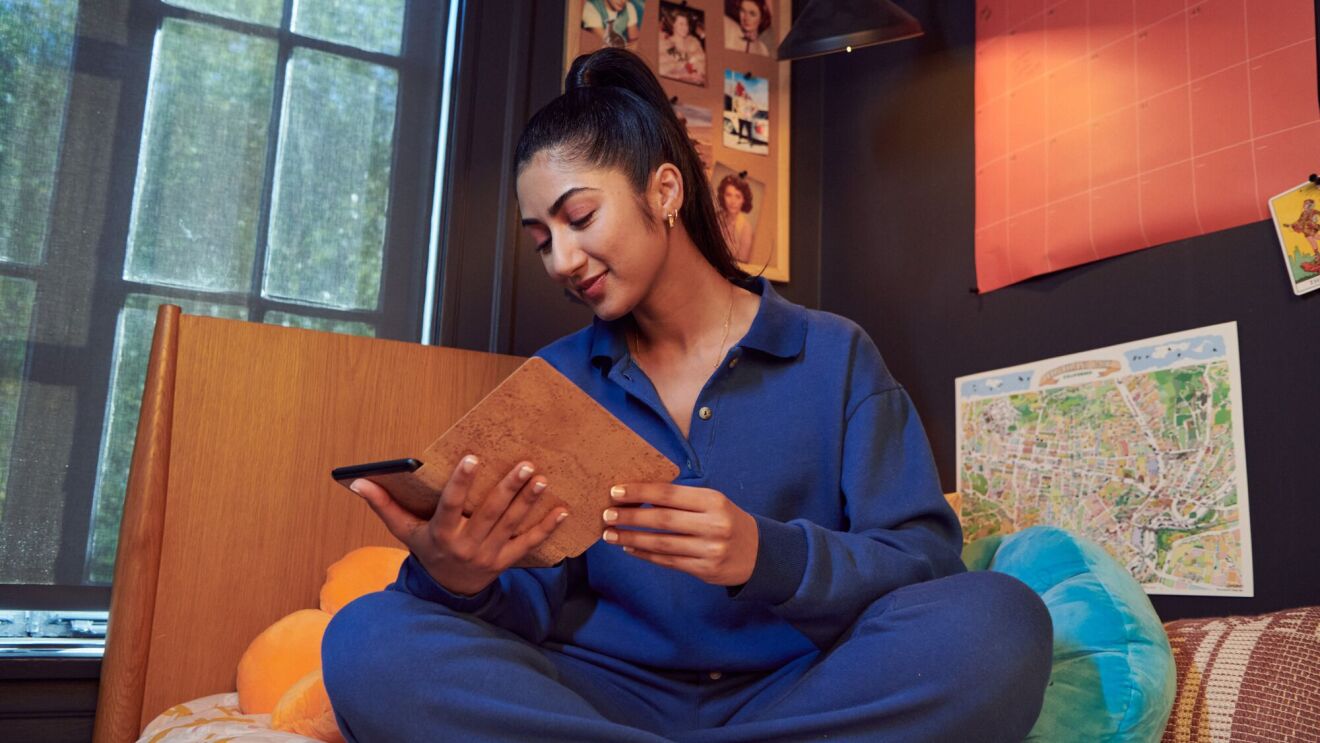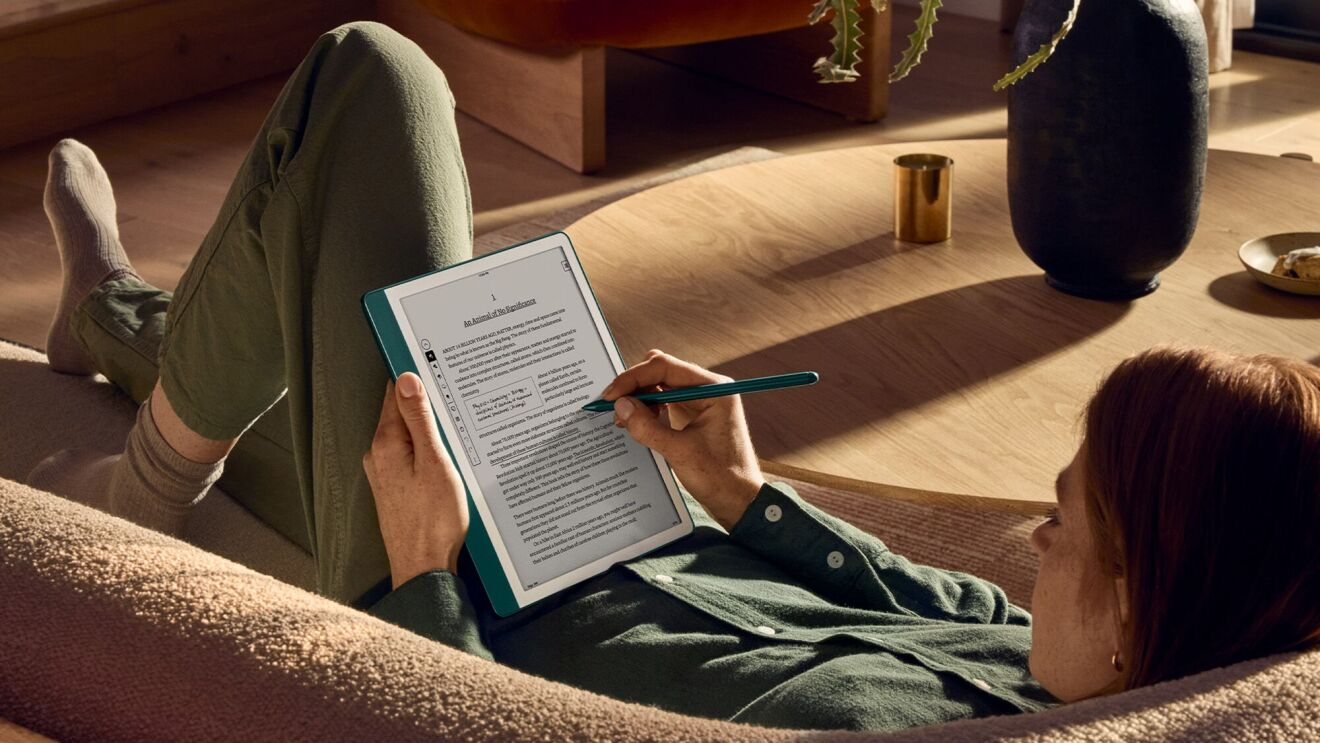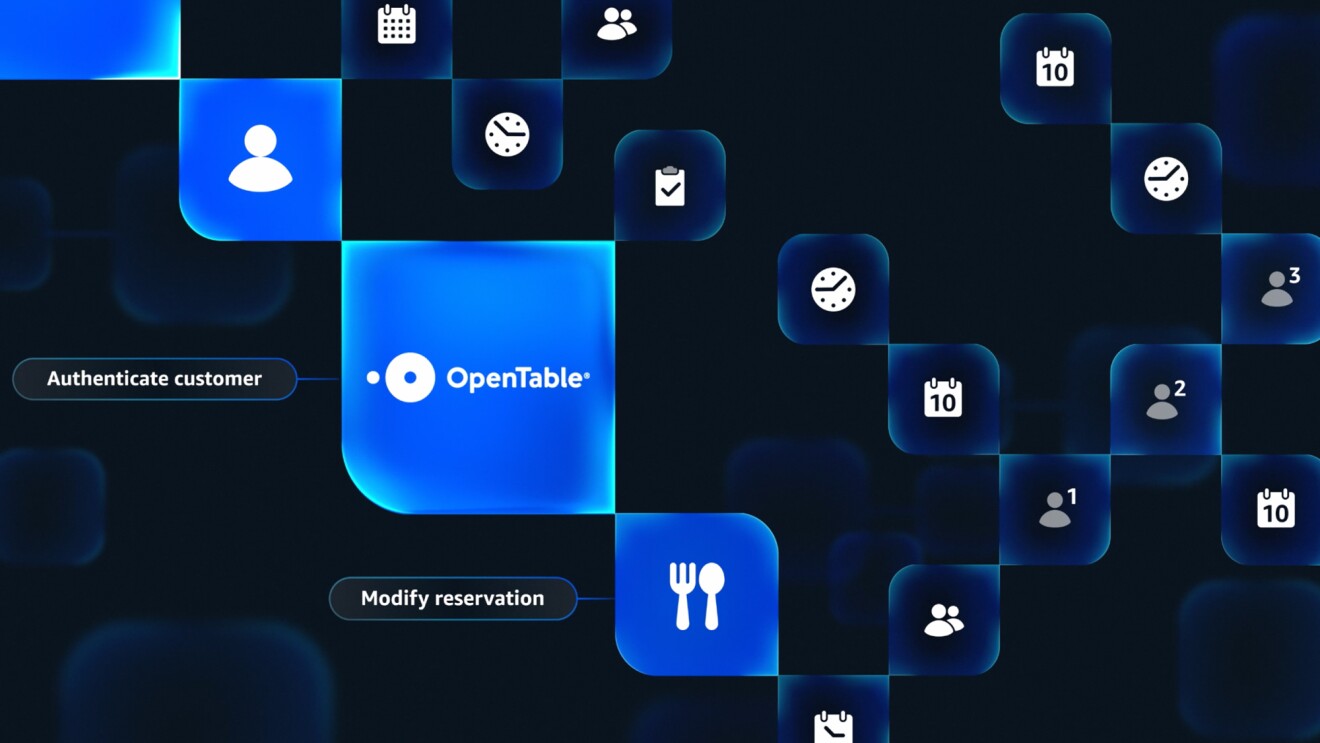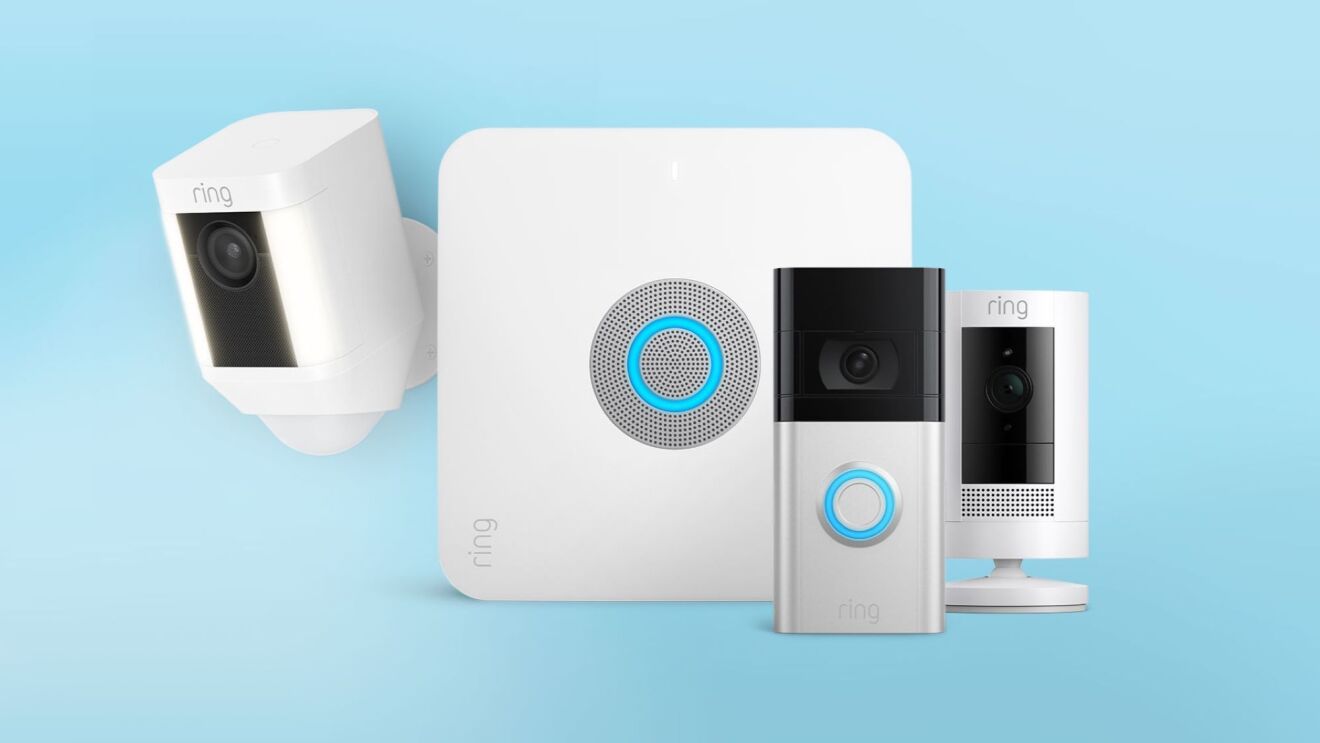“Do we think in five to 10 years that customers will depend on robots in their home?”
That question was posed to me and my colleagues during a team discussion a few years ago about how AI and consumer electronics will be more helpful in our future homes. It was a big question, and one that’s hard to predict, but it led to an exciting and thought-provoking discussion about a vision for home robotics. As we went around the room, we all believed in a future where every home would have at least one robot helping with everyday tasks. As we wrapped the meeting, the message was clear: “let’s get started.”
One of the things I love about working at Amazon is inventing the future, and I’ve spent a lot of time since that day on a team that’s imagining how robots can help customers in new ways at home. Today, we’re excited to introduce what we’ve been working on—our first robot for the home. We named it Astro.
Inventing a helpful, capable robot for your home
Astro is a new and different kind of robot, one that’s designed to help customers with a range of tasks like home monitoring and keeping in touch with family. It brings together new advancements in artificial intelligence, computer vision, sensor technology, and voice and edge computing in a package that’s designed to be helpful and convenient. Here are just a few of the ways Astro can be used around the house:
- Check in on your home: When you’re away, Astro helps provide the peace of mind that comes with knowing your home is safe. Astro can move autonomously around your home, navigate to check in on specific areas, show you a live view of rooms through the Astro app, or even send alerts if it detects an unrecognized person. If you want to see if you left the stove on, or to confirm you have all the ingredients you need for dinner in the pantry while you’re still at the store, you can send Astro to check or use its built-in periscope camera to take a better look. With Alexa Guard, Astro can also detect the sound of a smoke alarm, carbon monoxide alarm, or glass breaking, and send an alert to your phone—helping you keep your home safe, even when you’re somewhere else.
- Helps you look out for loved ones: Astro will be able to help customers who are remotely caring for elderly relatives and loved ones. Your loved one can ask Astro to set and deliver reminders, or you can use Drop In to stay connected. When used with Alexa Together, a new service designed to help family members feel more comfortable and confident living independently, family members can set up Reminders and receive alerts to give caregivers the reassurance that their loved ones are active and going about their day. Alexa Together also gives loved ones 24/7 hands-free access to Urgent Response, a professional emergency helpline.
- Provides peace of mind with Ring: Astro also works with Ring, adding to the peace of mind in keeping your home safe. With Ring Protect Pro, a new subscription service from Ring, you can set Astro to autonomously patrol your home when you’re out, proactively investigate when an event is detected, and automatically save video clips to your Ring cloud storage, which you can review from anywhere in the Ring or Astro apps.
- Brings Alexa to you around the home: When you’re home, Astro brings the benefits of Alexa to you, including information, entertainment, smart home control, and more. Astro can follow you from room to room while playing your favorite shows, podcasts, or music. It can also find you to deliver reminders, let you know that a timer went off, snap a family photo, and notify you of incoming Alexa calls—with the ability to follow you around your home while you are on the call.

Bringing fun to life through Astro’s personality
Astro’s ability to move not only creates utility and customer benefit—it also presents a new way to experience technology that is fun, entertaining, and engaging. During development, we realized giving Astro a personality would make regular interactions more delightful. We used feedback from hundreds of internal testers, and also took inspiration from film, TV, games, and animation principles to develop a persona that makes Astro unique. Astro uses its digital eyes on its rotating screen, body movements, and expressive tones to communicate. Its personality is also helpful—for example, it hangs out in places where it can be the most useful. For me, that’s in the kitchen, where I’m typically asking for a recipe or sending Astro to tell my family that dinner is ready.
Astro’s personality not only helps it communicate intent and offer delightful experiences, but it also evokes emotions like empathy when people use the device. In testing, we’ve been humbled by the number of people who said Astro’s personality made it feel like a part of their family, and that they would miss the device in their home after it was gone. That kind of connection is rare with consumer electronics, but we hope it will be commonplace with Astro and other future robots in the home.
Inventing new ways to help customers with the power of motion
Building Astro required that we innovate to solve very hard scientific challenges. Chief among them was how to make sure Astro was able to move autonomously around the house. Intelligent Motion, the technology that gives Astro mobility, uses advances in simultaneous localization and mapping (SLAM) to help Astro understand where it is, and autonomously navigate around dynamic home environments that constantly change. Using advanced onboard systems to adjust course in real time, Astro can pilot around objects that weren't on the floor yesterday, or even a few seconds ago. To help personalize the experience, Astro also supports a new computer vision feature called visual ID, which lets household members teach Astro to recognize them so it can deliver a reminder or call to a specific person, or even find someone to bring them an item you’ve put in Astro’s cargo bin. You can learn more about a few of the entirely new technology constructs we’ve built, including Intelligent Motion and visual ID, over at the Amazon Science blog.
Inventing with a focus on safety, privacy, and customer control
When designing Astro, we knew safety features and strong privacy controls needed to be foundational to the device. That’s why we’ve built Astro with multiple safety features, and layers of privacy and security to keep you in control of your experience and keep your data safe. For example, Astro offers:
- Advanced safety system: Astro’s system of safety sensors, combined with a dedicated safety processor, works to detect features like stairs and obstacles in real time. For example, control features, such as active and passive braking, can help stop the device if a pet suddenly moves into Astro’s path.
- On-device processing: We’ve designed Astro to handle a lot of the data processing on the device, including the images and raw sensor data it processes as it moves around your home. This helps Astro respond quickly to its environment. In addition, your visual ID is stored on the device, and Astro uses on-device processing to recognize you.
- Out of bounds zones: After you allow Astro to explore the layout of your home, you can designate areas that are off-limits. These out of bounds zones let Astro know where it’s not allowed to go. When told an area is out of bounds, Astro will avoid entering these spaces, and it will even leave the area if manually placed in an out of bounds zone.
- Microphones/cameras off: Like Echo devices, Astro has a microphones/cameras-off button customers can press whenever they want to turn off cameras, mics, and motion. When this button is pressed, Astro cannot move, or capture video or audio, and a dedicated red light under the button is illuminated to match the red status indicator on screen.
- Clear indicators when streaming features are active: Astro makes it easy to understand what it’s doing at any given moment. It has an easy-to-see LED light on top of its periscope to let you know when it is streaming video or audio to the cloud. For example, the indicator light on top of Astro’s periscope will turn green whenever video is streamed to the cloud, like when live view is in progress. You may also see a picture-in-picture view of your own video or another on-screen indicator. When Astro detects the wake word, a visual indicator signals that Astro is recording your voice request to stream to the cloud. For example, the indicator light on top of Astro’s periscope will turn blue.
An exciting future for home robotics
Throughout its development, Astro has gone through hundreds of thousands of hours of internal testing with Amazon employees—both in offices and homes across the country. During my own time with Astro, I’ve thought of lots of new things for it to do—and I’m confident that customers will have even more ideas we haven’t thought of (yet). That’s why we’re offering Astro as part of Day 1 Editions, a program that gives you access to our most ambitious ideas. Starting today, customers interested in Astro can sign up to request an invite when it starts shipping.
Astro will cost $1,449.99, but as part of the Day 1 Editions program, it will be available for an introductory price of $999.99 with a six-month trial of the Ring Protect Pro subscription included. Astro will be available in limited quantities, and we plan to start granting invitations and shipping devices to customers in the U.S. later this year. To learn more about Astro or request an invite, please visit www.amazon.com/Astro.
Working on Astro has been a thrilling and educational experience, and we see this as the start of a long journey. Just like Alexa, Astro is going to get smarter, and do even more over time, and we cannot wait to hear what you think.
Trending news and stories









